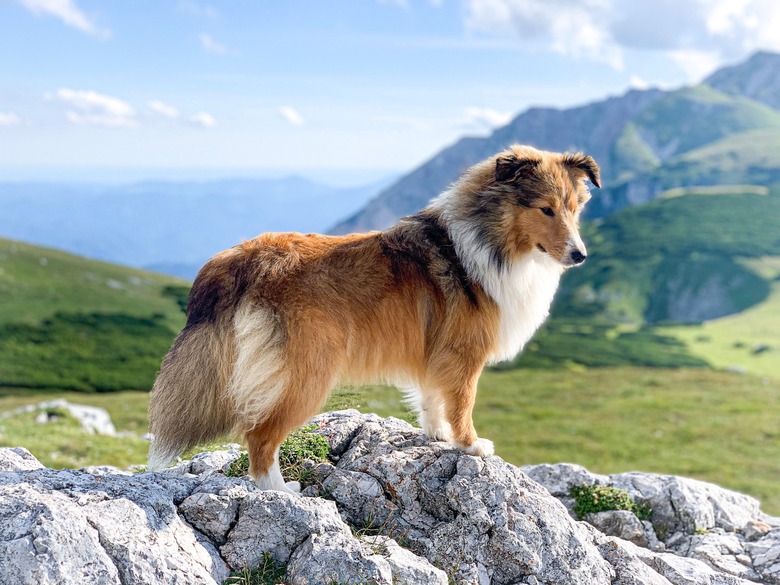The Stages Of Hair Growth In Shelties
A Shetland sheepdog, or sheltie, is known to be a loyal, easy-to-train family dog who is good with children, adults, and other pets. Sometimes mistaken for collies, these small herding dogs are also known for their lush, thick fur with a dense undercoat in colors of black, blue, and sable with white markings. It's a coat that develops in stages during the dog's life. A 6-month-old sheltie puppy looks surprisingly different from a sheltie full grown.
Sheltie puppy fur
Sheltie puppy fur
Shelties are born with fine, short fur of equal length all over their body. Fur of newborn shelties and very young puppies is still underdeveloped, and puppies rarely shed. This is temporary. Not much grooming is required at this age. For now, simply wipe them with a cloth or run a soft brush over the fur about once a week. At about half a year old, changes in sheltie fur become noticeable.
The changing fur of a sheltie
The changing fur of a sheltie
Adolescence begins for a sheltie at half a year old, and this is when their characteristically thick fur begins to reach the length it will stay into adulthood. A 6-month-old sheltie puppy begins to slowly develop his characteristic long, thick fur appearance.
Changes are gradual during the ages of 6 to 12 months because that's when the dog's ruff — fur around the neck and chest that gives shelties their lionlike look — gets thicker and longer. The top coat grows to about 6 inches long, and the feathery ears begin to grow into triangles matching the fur length along their neck. The front and back legs develop feathers, but below the hocks, fur remains smooth. By 10 months old, most shelties will have their first thick winter coat.
Adult sheltie fur
Adult sheltie fur
Full-grown shelties won't be at their most majestic until age 2 or 3 (depending on genetics) because their coat continues to fill in until then. However, like most sheepdog breeds, shelties with mature coats shed frequently. Most experience one or two "blowouts" per year when the fluffy undercoat falls out in tufts. Shelties are double-coated dogs, meaning they have an outercoat and undercoat, and that's simply more fur to shed. Also, because the fur is longer, it's more noticeable.
During adulthood, shelties look most like the dog associated with the breed: thick and long mane-like fur framing a wedge-shaped head, body fur that is approximately 6 inches long, and shorter fur on the lower legs. Keeping this fur free from matting is challenging, so it is necessary to brush them once a week and perhaps even more frequently during the spring and fall shedding seasons. A tool called an undercoat rake helps remove loose hair from the dog's undercoat. Otherwise, sheltie fur doesn't develop much during these adult years.
Caring for a sheltie's fur
Caring for a sheltie's fur
Omega-3 is good for dog coats, especially the thick coats on shelties. Food fortified with omega-3 isn't always enough, so consider giving your sheltie omega-3 supplements available at vet clinics or feed your dog treats, such as anchovies. Anchovies are fish high in omega-3 but are lower on the food chain, so they contain fewer toxins.
Brushing your dog's coat not only helps avoid mats but also helps distribute oils and encourages new fur growth. Comb the undercoat against the direction of the top coat to remove shedding fur, paying attention to the base of the ears and armpits because fur knots easily in those areas.
Sheepdog breeds and temperaments
Sheepdog breeds and temperaments
Sheepdog breeds, like shelties, are herding dogs by nature, meaning they are energetic and need an outlet for their active impulses. Shelties are smaller herder dogs, but they are equally intelligent and athletic. Thick, mature fur is a liability when running through fields and brush, but the necessary regular grooming is a small sacrifice in exchange for loyalty and love.


